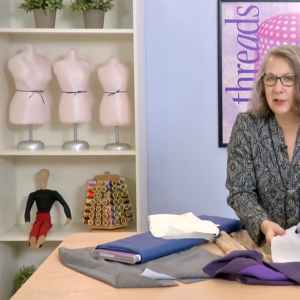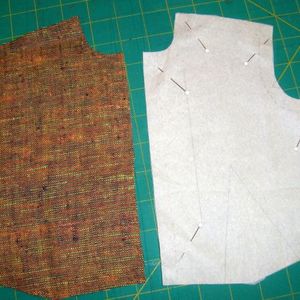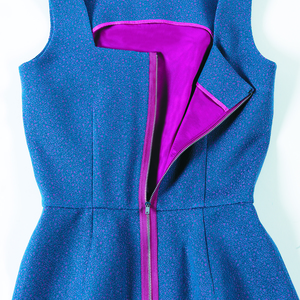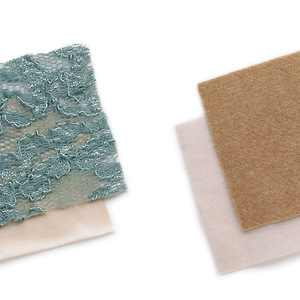Installing an Underlining
Support and shape fashion fabric with a hidden layer
Once a staple of fine sewing, underlinings have fallen out of favor in today’s quick-to-sew world. Installing an underlining takes time and attention to detail, but the results are oh, so worth it.
An underlining is a separate layer of cloth mounted to the back of each garment section. During garment construction, the two layers are handled as one. An underlining gives a silhouette a more sculptured look and adds strength and durability to the garment. It provides support and some wrinkle resistance to the fashion fabric, and can make sheers and lace fabrics more opaque. Underlinings prevent seams, hems, facings, and other construction details from showing on the garment’s right side. You can use an underlining on its own to finish a garment’s interior or conceal it with a standard lining. An important advantage of an underlining without a separate lining is that fit adjustments are much easier.
Skirts benefit hugely from underlining—I rarely make a skirt anymore that isn’t underlined. Construction details are supported, and the skirt travels more smoothly over the body. Like a built-in slip, only better, an underlining is about support, and who can’t use a little extra support in life?
Select and prepare an underlining
You’ll find many choices for underlining, but opt for fabrics that are thin and crisp. They should support the fashion fabric, but not compete with it. If an underlining you are considering doesn’t have these characteristics, look further. Be sure to prep the underlining.
 Sew-in options
Sew-in options
The most common underlining fabric is silk organza. Dharma Trading (DharmaTrading.com) has some of the best prices for 5.5-mm (momme weight) silk organza, available in black or white. Since silk is a protein fiber, silk organza can be colored with acid dyes to match…
Start your 14-day FREE trial to access this story.
Start your FREE trial today and get instant access to this article plus access to all Threads Insider content.
Start Your Free TrialAlready an Insider? Log in

































Log in or become a member to post a comment.
Sign up Log in